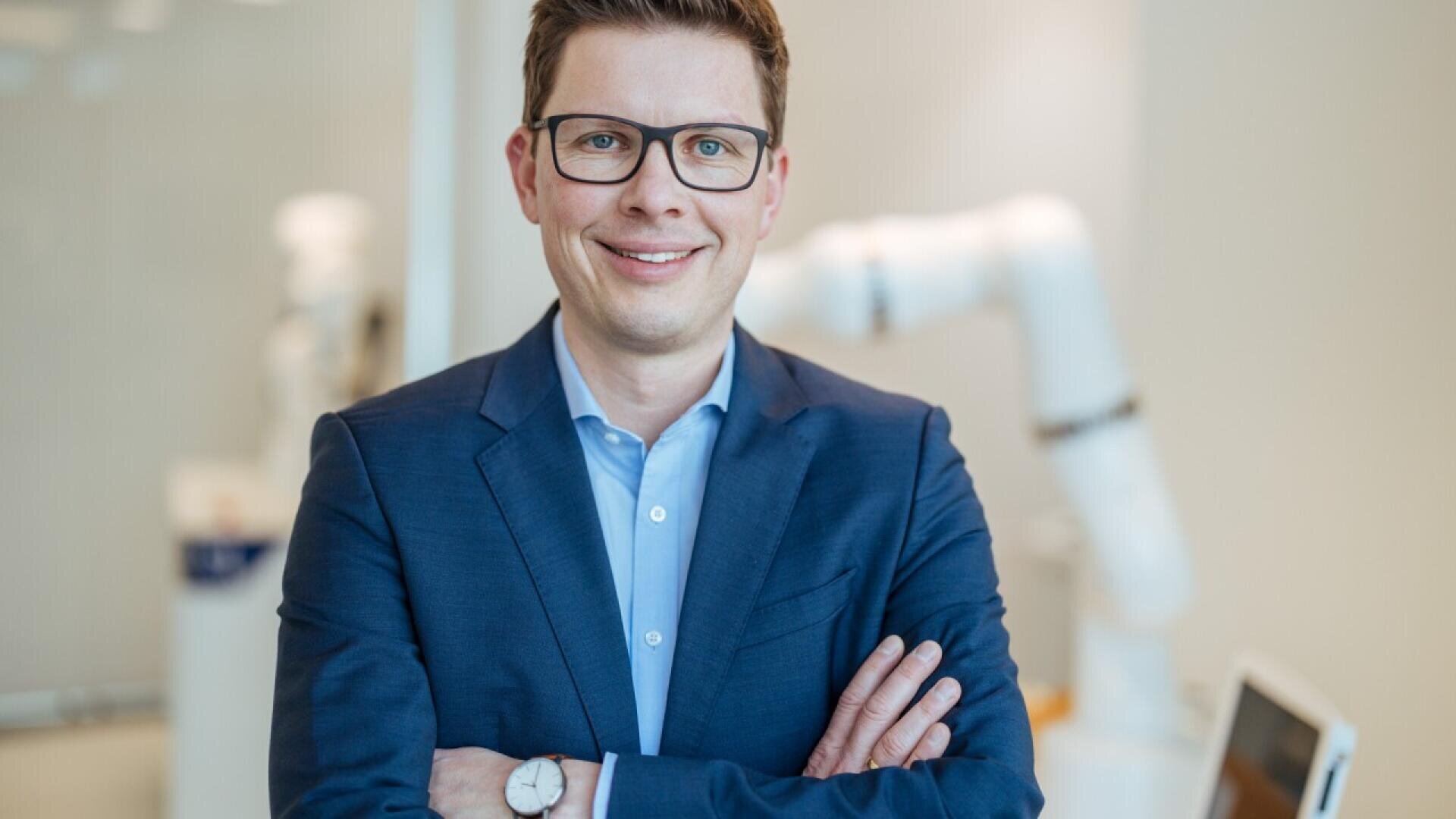"Robotics is indispensable in healthcare today"
KUKA is one of the major players in industrial robots. KUKA has also become an established force in the integration of robotics into medical products. In this interview, Axel Weber, Vice President Business Unit Medical Robotics, describes trends and challenges in medical robotics.
Mr. Weber, please describe KUKA's role in the field of robotics in healthcare. And how can robotics improve healthcare outcomes?
Axel Weber: KUKA is a leading supplier of robotic components for medical devices. At KUKA, we adapt industrially proven robot technology that medical technology companies integrate into their products. One outstanding product in this area is the LBR Med. Medical products in which the LBR Med is used can fulfill a wide range of tasks in the healthcare sector. The sensitive, seven-axis lightweight robot can be flexibly and easily integrated into medical devices for various medical activities.
In addition, the robot component facilitates and accelerates product development and approval for medical device manufacturers, as the LBR Med is certified according to the internationally recognized CB scheme. In addition to the LBR Med, KUKA also offers robots with high payloads for transporting heavy medical devices. Our robots are used in radiotherapy for precise tumor treatments. You will also find them in angiography systems for taking X-ray images.
Does KUKA have any other innovative products in the pipeline that you can talk about?
Axel Weber: Based on more than two decades of experience in robotics in healthcare, our team offers medical device manufacturers the technology and know-how to support them on their way to market maturity. With a dedicated R&D department for the medical sector, we are continuously developing our robotics and associated software solutions. Nevertheless, robot technology is evolving rapidly and we are looking for new technologies for the next generations of our robots to increase functionality and adapt even better to our customers' applications. We also need to address cost pressures in the healthcare system and ensure that robot technology is affordable.
What trend do you see in medical robotics? What advantages and benefits can it offer?
Axel Weber: Robotics has arrived in the healthcare sector and is now indispensable. This applies to everything from diagnostics and surgical procedures on patients to therapy. There are many possible applications: biopsies for brain tumors, teleoperative ultrasound examinations or rehabilitation after accidents or strokes. However, the use of robotics is not yet standard in care. Several medical technology companies offer robotic solutions and the pressure to be competitive in this area is great. Therefore, companies need to focus on the medical application and not on developing a robotic solution from scratch, which would result in high costs and resource requirements. To get to market quickly and offer compelling solutions, they need to work with a provider that can offer them the right robotics and the necessary interfaces for their application.
The use of robotics and AI in healthcare has many advantages. Many medical facilities are facing a shortage of skilled labor, which can negatively impact the quality of diagnosis and treatment of their patients. Robots are not only able to improve the quality of treatments that require the highest precision and innovative technology, they are also more persistent than humans and do not get tired. They can also relieve doctors of monotonous or physically demanding tasks. This way, human doctors or nurses can focus on other tasks in treating the patient that require their full attention.

Robotics has arrived in the healthcare sector ©KUKA Group
Are there any current challenges in the field of medical robotics?
Axel Weber: A current challenge in the field of medical robotics is the increasing cost pressure in global healthcare systems. Many robot-based systems for diagnostics and therapy require high investments in order to be brought to market maturity. Added to this is the regulatory framework, which varies from country to country. Medical technology companies cannot concentrate on building a robotic solution for one application. A robotic platform must be able to serve multiple applications - which requires more generic robotic technologies on the one hand and really highly specialized variants of these technologies on the other.
How will medical robotics develop over the next ten years?
Axel Weber: In particular, the combination of medical robotics with AI will gradually produce more autonomous solutions to improve patient treatment. In addition, robotics in the healthcare sector will increasingly become a mass product. This will lead to a push into areas where robotics is urgently needed but is currently still of little importance. A good example of this is elderly care.
About the person
Dipl.-Ing. Axel Weber began his professional career after studying electrical engineering at the Technical University of Munich as a research assistant focusing on molecular imaging research at Klinikum rechts der Isar in Munich. He then joined Siemens Healthineers as a product specialist for preclinical imaging systems responsible for Europe, the Middle East and Africa. Axel Weber has held various positions at KUKA since 2012 and has been responsible for the global sales, business development and marketing team since 2018. He has headed the global business unit Medical Robotics since 2023.


